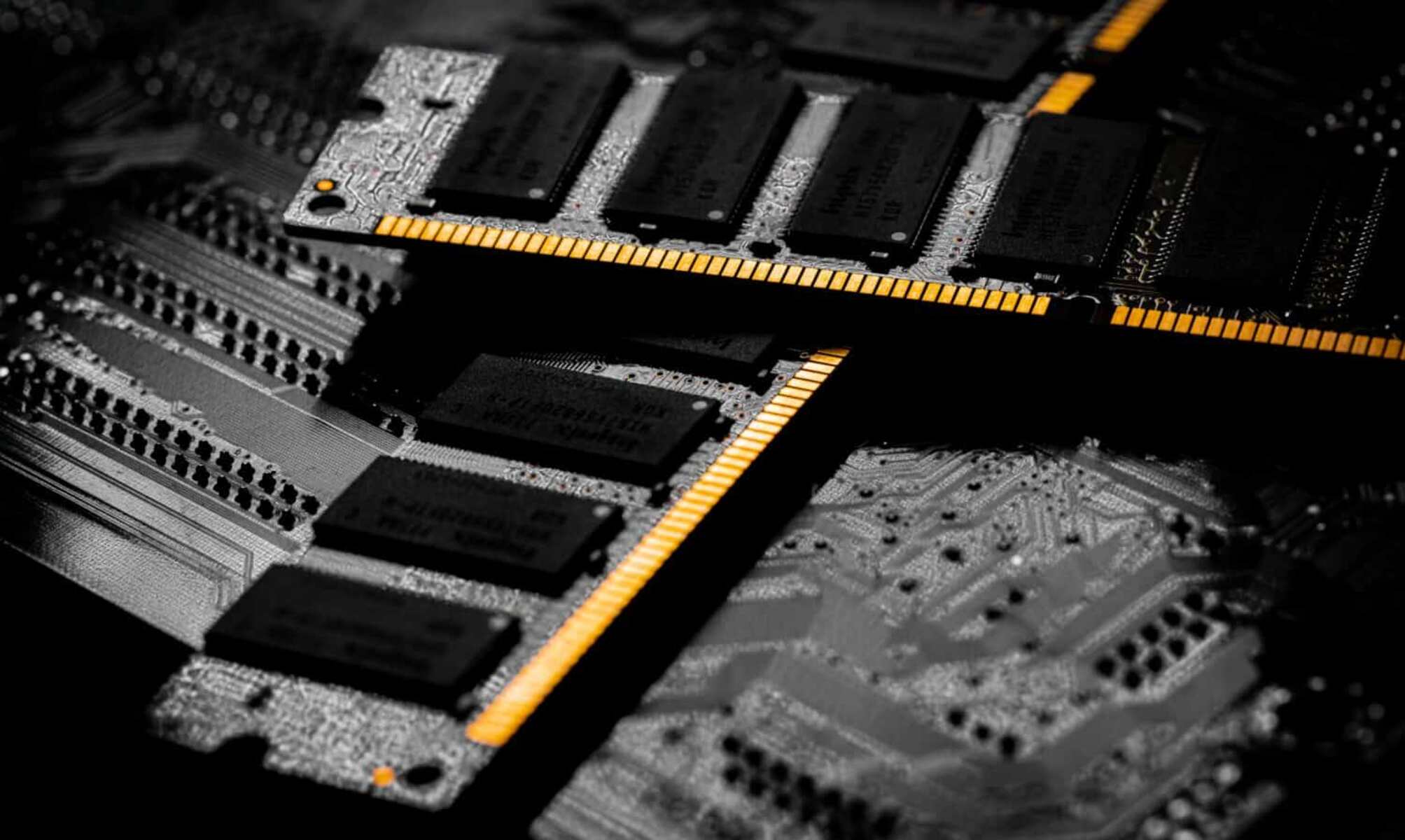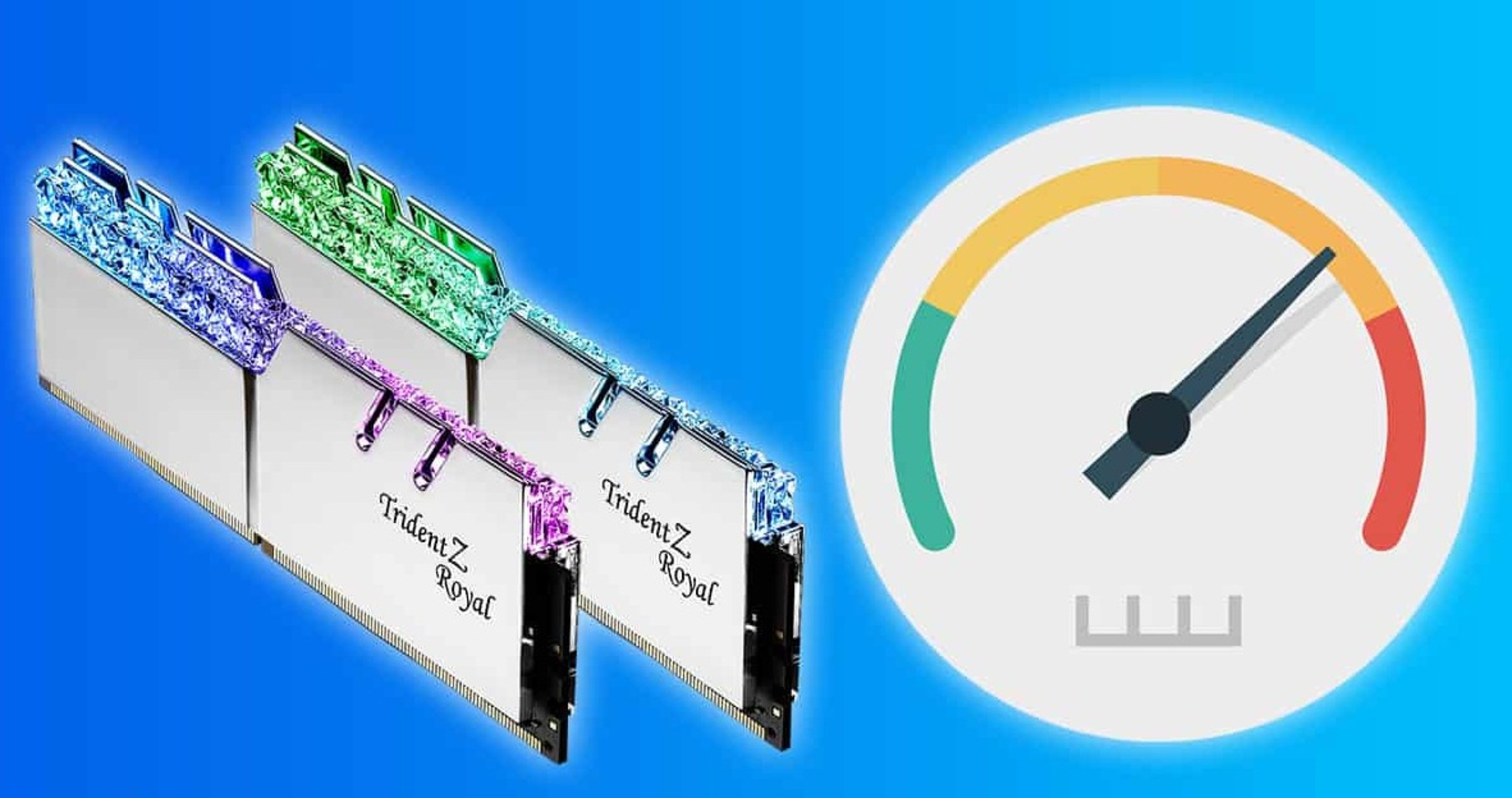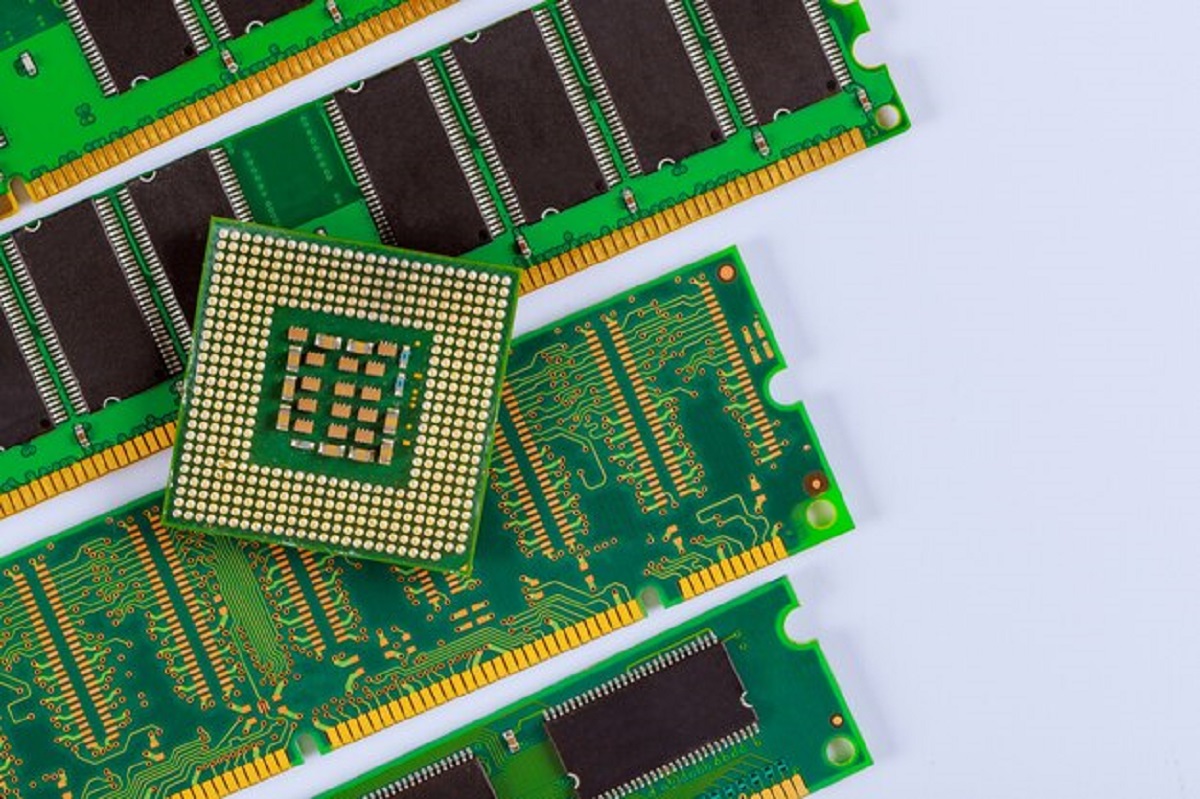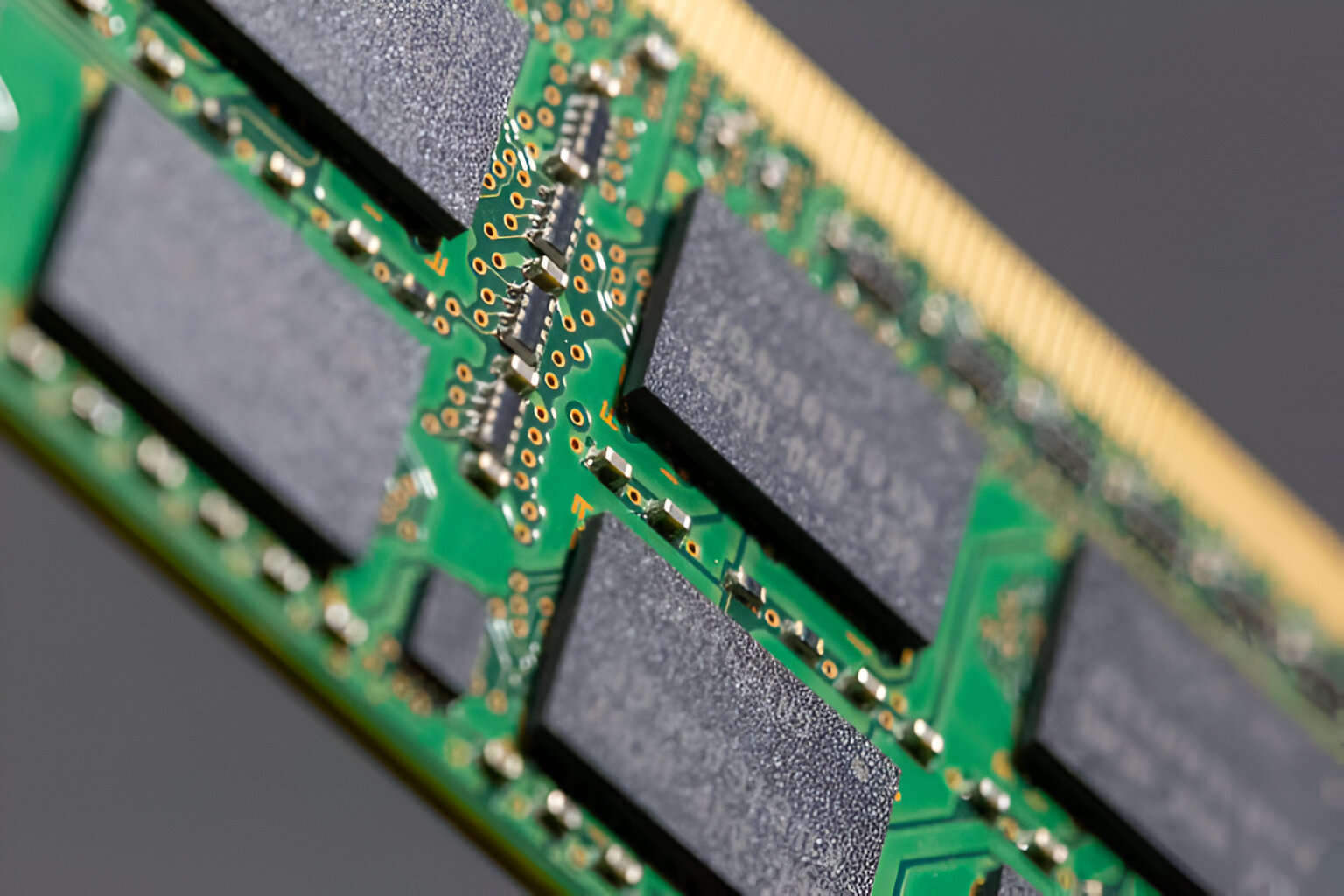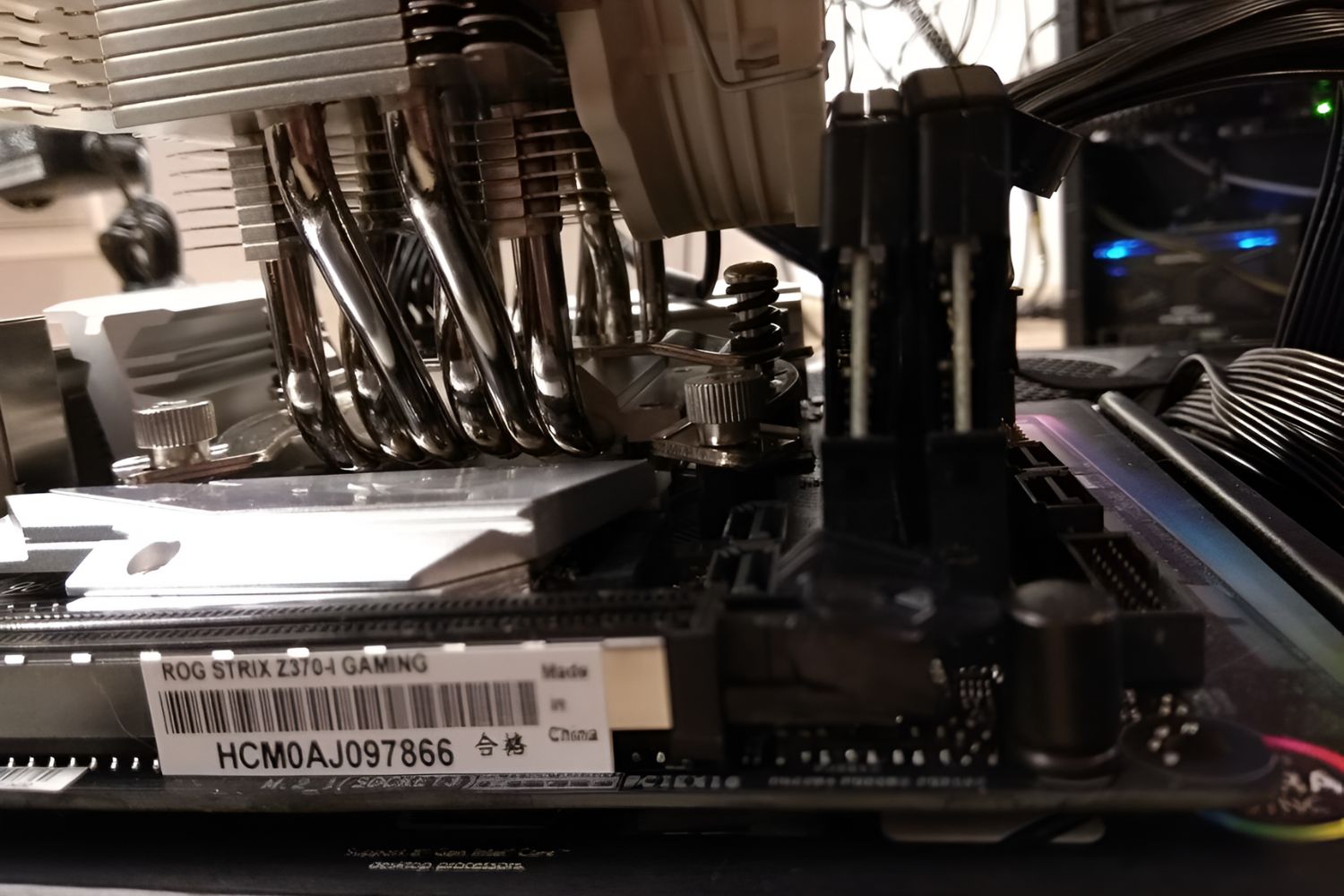Introduction
When it comes to adding or upgrading RAM in a computer system, it is important to ensure compatibility between the different memory modules. Mixing RAM modules of different types or specifications can lead to potential problems and compatibility issues.
Random Access Memory, commonly known as RAM, is a crucial component of a computer that plays a vital role in its overall performance. RAM serves as a temporary storage space for data that the processor needs to access quickly. It allows the computer to multitask efficiently, as it stores data that the processor can quickly retrieve and write to.
There are different types of RAM available, such as DDR3, DDR4, and the newer DDR5. These types differ in terms of technology, data transfer rate, and form factor. It is essential to have a clear understanding of the specifications and requirements of your computer system to choose the appropriate RAM type.
When considering adding or upgrading RAM, the question arises: What happens if I use two different RAM modules? It is important to understand the potential compatibility issues and performance impacts that can arise from mixing different types of RAM.
In this article, we will delve into the world of RAM modules, exploring the potential problems and risks associated with using two different RAM modules in a computer system. We will discuss compatibility issues, performance impacts, dual-channel configuration with different RAM modules, and overclocking considerations. By the end of this article, you will have a clear understanding of the potential risks and considerations involved in using two different RAM modules.
What is RAM?
RAM, short for Random Access Memory, is a vital component of a computer system that stores data and instructions needed by the processor to perform tasks. It is a type of volatile memory, meaning its contents are lost when the computer is powered off or restarted.
RAM plays a crucial role in the overall performance and speed of a computer. It acts as a temporary storage space where the processor can quickly access data that is actively being used. When you open an application or run a program, the necessary data is loaded into RAM to facilitate faster access compared to retrieving it directly from the slower hard disk or solid-state drive.
RAM is designed for random access, meaning the processor can retrieve any piece of data stored in it in an equal amount of time, regardless of its position. This random access ability allows for efficient multitasking, as the processor can rapidly switch between different programs and data stored in RAM.
RAM consists of small electronic components called memory cells that store binary data in the form of 0s and 1s, representing off and on states. Each memory cell can store a fixed amount of data, typically 8 bits or 1 byte. These bytes are organized into larger structures called memory modules, which are inserted into slots on the computer’s motherboard.
The amount of RAM installed in a computer system directly impacts its ability to handle multiple tasks and process data quickly. More RAM allows for smoother multitasking, faster program execution, and better overall system performance.
It is important to note that RAM is different from permanent storage devices like hard drives or solid-state drives. Unlike these storage devices, RAM only retains its data temporarily and requires a constant power supply to maintain its content. Once the computer shuts down or restarts, the data stored in RAM is erased, and the RAM is ready to receive new information when the system is powered up again.
In summary, RAM is a crucial component of a computer system that provides quick access to data needed by the processor. Its random access nature and temporary storage capabilities make RAM essential for multitasking and overall system performance.
Types of RAM
There are several types of RAM available in the market, each with its own technology, specifications, and compatibility requirements. Understanding the different types of RAM can help in making an informed decision when upgrading or adding memory to a computer system.
1. DDR3 (Double Data Rate 3): DDR3 RAM is one of the most common types used in older computer systems. It operates at lower frequencies compared to newer generations but still offers respectable performance. DDR3 RAM modules are not backward compatible with DDR4 or DDR5 slots, so they cannot be mixed and matched.
2. DDR4 (Double Data Rate 4): DDR4 RAM is the successor to DDR3 and offers improved performance and energy efficiency. It operates at higher frequencies and has larger memory capacities. DDR4 RAM is compatible with motherboards that have DDR4 memory slots, and they cannot be used in DDR3 slots.
3. DDR5 (Double Data Rate 5): DDR5 RAM is the latest generation of memory technology, offering higher speeds, increased bandwidth, and lower power consumption. DDR5 RAM is backward compatible with DDR4 slots, so it can be used in motherboards that support DDR4 memory. However, it is important to note that the full benefits of DDR5 RAM will only be realized when used with a compatible DDR5 motherboard.
4. SDRAM (Synchronous Dynamic Random Access Memory): SDRAM is a type of RAM that synchronizes its operation with the computer’s bus speed. It has been widely used in older computer systems and offers decent performance for everyday tasks. However, SDRAM is outdated and less commonly used in modern systems.
5. ECC RAM (Error-Correcting Code RAM): ECC RAM is a specialized type of RAM used in servers and workstations where data accuracy and reliability are critical. ECC RAM can detect and correct certain types of memory errors, providing increased system stability and protection against data corruption.
When selecting RAM for a computer system, it is important to ensure compatibility with the motherboard. The motherboard specifications will indicate the supported memory types, speeds, and capacities. Mixing different types of RAM can lead to compatibility issues and may prevent the system from booting or functioning properly.
Mixing Different Types of RAM
When it comes to RAM, it is generally not recommended to mix different types or specifications of memory modules in a computer system. While it may seem tempting to add RAM from different generations or brands to increase capacity or save costs, it can lead to compatibility issues and potential performance problems.
One of the main concerns when mixing different types of RAM is compatibility. RAM modules from different generations, such as DDR3 and DDR4, have different voltage requirements, pin layouts, and signaling technologies. Mixing incompatible RAM modules can result in the system failing to recognize the memory or causing stability issues, such as crashes or system freezes.
Even if the modules are technically compatible, mixing different types of RAM may result in the system operating at the lowest common denominator. For example, if you have a faster DDR4 RAM module and a slower DDR3 module, the system may automatically adjust the speed to match the slower module, reducing the overall performance gain that could have been achieved with the faster RAM alone.
Another consideration when mixing different types of RAM is the impact on dual-channel or quad-channel memory configurations. These configurations require identical RAM modules to work optimally. Mixing different types or capacities of RAM can disable the dual-channel functionality or introduce latency, affecting memory bandwidth and overall system performance.
In some cases, mixing different types of RAM may work, but it is often an unpredictable scenario. Even if the system appears to function without immediate issues, there could be hidden problems that may manifest in the long run. It is advised to prioritize stability and compatibility by using the same type and specifications of RAM modules within a system.
If you find yourself in a situation where you have different types of RAM modules and need to install them in the same system, it is recommended to consult the motherboard and RAM manufacturer’s documentation or support resources for guidance. They may provide a list of compatible RAM configurations or advise against mixing different types.
Ultimately, it is best to plan ahead and acquire the desired amount and type of RAM modules together to ensure compatibility and optimal performance without the complications that may arise from mixing different types of RAM.
Compatibility Issues
When it comes to RAM, compatibility is a crucial factor to consider. Mixing different RAM modules can result in compatibility issues that can impact the stability and performance of your computer system. Here are some potential compatibility issues that may arise:
1. Voltage and Timing: RAM modules have specific voltage requirements and timing settings. Mixing RAM modules with different voltage or timing specifications can cause conflicts and prevent the computer system from booting or operating properly. It is important to ensure that all RAM modules have the same voltage and timing settings for optimal compatibility.
2. Speed and Frequency: Different RAM modules may have different speed or frequency ratings. Mixing RAM modules with different speeds can lead to compatibility issues, as the system may not be able to properly synchronize the different modules. This can result in reduced performance or system instability. It is advisable to use RAM modules with matching speed or frequency ratings for optimal compatibility.
3. Capacity and Configuration: RAM modules come in various capacities, such as 4GB, 8GB, or 16GB. Mixing RAM modules with different capacities can lead to compatibility issues, particularly when configuring a dual-channel, triple-channel, or quad-channel memory setup. It is recommended to use RAM modules with the same capacity and configuration for optimal performance and compatibility.
4. Brand and Model: While not always a guarantee of compatibility issues, mixing RAM modules from different brands or models can occasionally result in compatibility problems. This can be due to variations in design or non-standard specifications. It is generally recommended to use RAM modules from the same brand and model for the best compatibility.
5. Memory Slots: The number and type of memory slots on your motherboard can also affect compatibility. Some motherboards have specific requirements for the placement of RAM modules, such as using specific slots for dual-channel or quad-channel configurations. It is important to consult the motherboard’s documentation to ensure proper placement of the RAM modules for optimal compatibility.
When encountering compatibility issues with RAM, it is recommended to first check the motherboard manufacturer’s website or documentation for compatibility lists and recommendations. Many motherboard manufacturers provide lists of tested and supported RAM modules that are known to work well with their products.
In some cases, a BIOS update may be available to address compatibility issues or improve compatibility with certain RAM modules. It is advisable to check for BIOS updates and install them if necessary.
In summary, compatibility issues can arise when mixing different RAM modules. It is crucial to ensure that the voltage, timing, speed, capacity, and configuration of the RAM modules are compatible to avoid stability issues and maximize performance.
Performance Impact
Mixing different RAM modules in a computer system can have a significant impact on overall performance. The performance impact can vary depending on several factors, including the types of RAM modules being mixed, the configurations used, and the intended use of the system. Here are some potential performance impacts that may occur:
1. Reduced Memory Bandwidth: Mixing different types or speeds of RAM can result in reduced memory bandwidth. When RAM modules with different specifications are used together, the system may automatically adjust the speed to match the slowest module. This can lead to a decrease in overall memory performance and limit the system’s ability to transfer data quickly between the RAM and the processor.
2. Increased Latency: RAM modules with different timings can introduce increased latency, affecting the responsiveness and speed of the system. When mixing RAM modules, the system may need to adjust the timings to accommodate the slowest module. Higher latency can lead to delays in data retrieval and processing, impacting overall system performance and responsiveness.
3. Disabling Dual-Channel or Quad-Channel Memory: Dual-channel and quad-channel memory configurations can provide increased memory bandwidth and performance when using identical RAM modules. However, mixing different modules can result in the system disabling the dual-channel or quad-channel functionality. This leads to a reduced memory performance compared to using the system in its optimal memory configuration.
4. Instability and Errors: Incompatible RAM modules can cause system instability, leading to crashes, freezes, or even the inability to boot the system. When mixing RAM modules, compatibility issues may arise due to differences in voltage requirements, timings, or other specifications. These compatibility issues can manifest as system errors and affect the overall stability of the computer.
5. Negligible Performance Impact: In some cases, mixing different RAM modules may have little to no noticeable performance impact, especially when the modules are similar in specifications and the system is not performing memory-intensive tasks. However, even if the performance impact is minimal, it is still recommended to use identical RAM modules for optimal compatibility and performance.
It is important to note that the actual performance impact will depend on the specific combination of RAM modules, the motherboard, and the applications being used. While mixing RAM modules may seem like a cost-effective solution or a way to reuse existing modules, the potential performance drawbacks should be carefully considered.
If performance is a critical factor for your computer system, it is generally recommended to use identical RAM modules that are specifically designed to work together in dual-channel or quad-channel configurations. This ensures maximum memory performance and minimizes compatibility issues.
In summary, mixing different RAM modules can have a significant impact on performance, including reduced memory bandwidth, increased latency, and potential instability. It is advisable to use identical RAM modules in dual-channel or quad-channel configurations for optimal performance and compatibility.
Dual-Channel vs Single-Channel
When it comes to RAM configurations, dual-channel and single-channel are two common setups. Understanding the differences between these configurations is important when considering the performance and efficiency of your computer system.
In a single-channel configuration, the memory is accessed through a single memory channel. This means that the data travels between the RAM module and the processor one bit at a time. While single-channel configurations are commonly found in budget or entry-level systems, they may have limitations in terms of memory bandwidth and overall performance.
In contrast, dual-channel configurations allow for two memory channels to be utilized simultaneously. This means that the data can be transferred between the RAM and the processor in parallel, effectively doubling the memory bandwidth. Dual-channel configurations offer the potential for increased performance and efficiency, especially in memory-intensive tasks.
The increased memory bandwidth in dual-channel configurations can lead to improved data transfer rates and faster access to stored information. This can result in enhanced overall system performance, particularly in tasks that heavily rely on memory, such as video editing, gaming, and multitasking.
It is important to note that in order to take advantage of the dual-channel configuration, identical RAM modules are typically required. These modules should have the same capacity, speed, and timings to ensure proper synchronization and optimal performance. Mixing different RAM modules can result in the system running in single-channel mode or experiencing compatibility issues, limiting the benefits of the dual-channel setup.
While dual-channel configurations offer potential performance advantages, it is important to consider the specific needs and requirements of your computer system. In some cases, the performance boost from dual-channel may not be noticeable in everyday tasks or for systems with light usage. However, for tasks that demand higher memory bandwidth, such as video editing or gaming, dual-channel configurations can provide a noticeable improvement in performance.
It is worth mentioning that some newer systems, particularly those using the latest DDR5 RAM, have introduced quad-channel memory configurations. These configurations further increase the memory bandwidth by utilizing four memory channels simultaneously. Similar to dual-channel setups, quad-channel configurations require identical RAM modules to function optimally.
In summary, dual-channel configurations offer the potential for increased memory bandwidth and improved system performance compared to single-channel setups. When opting for a dual-channel configuration, ensure that identical RAM modules are used to maximize compatibility and performance benefits.
Dual-Channel Configuration with Different RAM
When configuring RAM in a dual-channel setup, it is generally recommended to use identical RAM modules to ensure optimal performance and compatibility. However, there may be situations where you have different RAM modules available and want to utilize them in a dual-channel configuration. While it is possible to do so, there are some important considerations to keep in mind:
1. Same Capacity and Timing: For a dual-channel configuration with different RAM modules, it is essential to ensure that the modules have the same capacity and timing specifications. This ensures that the memory controller can synchronize the memory access effectively. Mismatched capacities or timings can lead to compatibility issues and potentially reduce performance.
2. Variations in Speed: Mixing RAM modules with different speeds can result in stability issues or the system automatically lowering the speed to match the slowest module. While it is technically possible to use different speed modules in a dual-channel configuration, it is generally recommended to use modules with matching speeds to avoid complications and maximize performance.
3. Limitations on Dual-Channel Benefits: When using different RAM modules in a dual-channel configuration, it is important to understand that the benefits of dual-channel memory may be limited. The system may only operate in dual-channel mode when both the modules have identical specifications. If one module is slower or has different timings, the system may default to operating in single-channel mode, reducing the potential performance gains.
4. Stability Concerns: Mixing different RAM modules introduces an element of uncertainty, as compatibility issues or stability problems may arise. The motherboard and memory controller may not be able to handle the differences between the modules, resulting in crashes, freezes, or other system issues. It is important to thoroughly test the system for stability after configuring different RAM modules in a dual-channel setup.
It’s worth noting that using different RAM modules in a dual-channel configuration is not a recommended practice. The potential performance gains may not outweigh the risks and complications that can arise. If possible, it is always preferable to use identical RAM modules designed for dual-channel operation to ensure optimal performance and compatibility.
If you find yourself in a situation where you have different RAM modules available and want to maximize performance, consider using the modules in a single-channel configuration or upgrading to a matching set of RAM modules that are specifically designed for dual-channel operation.
In summary, while it is possible to configure different RAM modules in a dual-channel setup, it is generally not recommended due to potential compatibility issues and limited performance benefits. Using identical RAM modules designed for dual-channel operation is the ideal approach for ensuring optimal performance and stability in a dual-channel configuration.
Overclocking Considerations
Overclocking is a process of increasing the clock speed or frequency of various components in a computer system, including the RAM. It is done to squeeze out additional performance beyond the manufacturer’s specified limits. When considering overclocking your RAM, there are several important factors to consider:
1. RAM Module Quality: Overclocking puts additional stress on the RAM modules, which can lead to instability or even damage if the modules are of poor quality or not designed for overclocking. It is recommended to use high-quality RAM modules from reputable manufacturers that are specifically labeled as “overclockable.”
2. Heat Dissipation: Overclocking generates more heat, and heat can negatively impact the performance and stability of the RAM modules. Providing adequate cooling solutions, such as improved airflow in the system or using aftermarket coolers like heat sinks or liquid cooling, can help dissipate the excess heat and maintain the stability of the overclocked RAM modules.
3. Voltage Requirements: Overclocking often requires increasing the voltage supplied to the RAM modules to maintain stability at higher frequencies. However, raising the voltage too high can lead to overheating and potential damage to the modules. It is crucial to research the safe voltage ranges for your specific RAM modules and motherboard, and adjust the voltage accordingly within those safe limits.
4. Timing Adjustments: Overclocking RAM may also involve adjusting the timings, such as CAS latency, tRCD, tRP, and tRAS. These timings affect the speed at which data is accessed and can significantly impact the overall performance of the RAM. It is important to research and understand the impact of each timing adjustment before making changes to ensure stability and optimal performance.
5. Stress Testing and Stability: Overclocking RAM should always be accompanied by thorough stress testing to ensure its stability at the new frequencies and timings. Stress testing involves running intensive benchmarks or software tools that put the RAM under heavy load for an extended period. If the system crashes, freezes, or exhibits errors during stress testing, it indicates instability, and adjustments to the overclock may be necessary.
6. Warranty Considerations: Overclocking RAM often voids the manufacturer’s warranty, as it involves operating the modules beyond their rated specifications. It is essential to understand the implications of overclocking on the warranty and whether you are willing to take on the risk of potentially voiding it.
It is important to note that not all RAM modules are created equal. Some modules may overclock better than others due to higher-quality components or better binning. It is recommended to do thorough research and read user reviews or forums to determine which RAM modules have a good track record for overclocking.
Lastly, be prepared for the reality that not all RAM modules will be capable of significant overclocking. Some modules may have limitations due to their design or quality. It is always wise to start with conservative overclocking settings and gradually increase them while monitoring stability and performance.
In summary, overclocking RAM can potentially provide a performance boost, but it comes with risks and considerations. Quality RAM modules, proper heat dissipation, voltage adjustments, timing tweaks, stress testing, and understanding warranty implications are crucial factors to consider when attempting to overclock RAM.
Potential Problems and Risks
While there are potential benefits to mixing different RAM modules or overclocking your RAM, it is important to be aware of the potential problems and risks that may arise. These include:
1. Compatibility Issues: Mixing different types, speeds, or capacities of RAM modules can lead to compatibility issues. Incompatible RAM modules may cause the system to fail to recognize the memory altogether or result in instability, crashes, and other system errors. It is crucial to ensure that any mixed RAM configurations are supported by the motherboard and meet the necessary compatibility requirements.
2. Reduced Stability: Mixing different RAM modules or overclocking can introduce instability to a computer system. The system may experience crashes, freezes, or unexpected restarts, as the RAM modules may not be able to handle the increased stress or operate in a synchronized manner. It is important to thoroughly test the stability by running stress tests and monitoring for any signs of instability.
3. Performance Degradation: In some cases, mixing different RAM modules can lead to a decrease in overall system performance. Mismatched modules may result in the system operating in a single-channel mode or at reduced speeds. Similarly, overclocking the RAM modules beyond their stable limits may result in decreased performance or instability. It is important to monitor system performance and be prepared to make adjustments if needed.
4. Voiding Warranties: Overclocking RAM or mixing different RAM modules may void the warranty provided by the manufacturer. Manufacturers typically do not support or cover any damage caused by overclocking or using incompatible RAM configurations. It is crucial to understand the implications of voiding the warranty and take responsibility for any potential damage that may occur.
5. Data Loss or Corruption: In extreme cases, the instability caused by mixing incompatible RAM modules or overclocking may lead to data loss or corruption. Unreliable RAM configurations can result in errors when writing or retrieving data from the memory, potentially causing damage to files or the operating system itself. Regular backups of important data are always recommended as a precautionary measure.
6. Lifespan Reduction: Overclocking RAM or using incompatible RAM modules can potentially put additional stress on the memory components, resulting in a reduction in their lifespan. Operating the RAM modules beyond their specified limits may lead to premature failure or degradation of the modules over time. It is important to weigh the potential performance gains against the risk of shorter lifespan when considering any modifications to the default specifications of the RAM.
In summary, mixing different RAM modules or overclocking RAM can lead to compatibility issues, reduced stability, performance degradation, voided warranties, data loss or corruption, and a potential decrease in the lifespan of the RAM modules. It is crucial to evaluate the possible risks and carefully consider the potential benefits before making any modifications to your RAM configuration.
Conclusion
When it comes to RAM configurations, it is important to prioritize compatibility, stability, and optimal performance. Mixing different RAM modules, whether it be different types, speeds, capacities, or timings, can lead to potential compatibility issues and performance impacts. It is generally recommended to use identical RAM modules, specifically designed for the intended configuration, to ensure optimal compatibility and performance.
Similarly, overclocking RAM can provide a performance boost, but it comes with risks and considerations. The quality of the RAM modules, heat dissipation, voltage adjustments, timing tweaks, and thorough stress testing are all important factors to consider when attempting to overclock RAM. It is crucial to research and understand the implications of overclocking on the stability and longevity of the RAM modules.
Overall, maintaining a clear understanding of the specifications and requirements of your computer system is paramount when configuring RAM. While it may be tempting to mix different RAM modules or overclock for increased performance or cost savings, it is crucial to carefully weigh the potential benefits against the potential problems and risks that may arise.
It is recommended to consult the motherboard and RAM manufacturer’s documentation or support resources for guidance when in doubt. They can provide valuable information on compatible RAM configurations, overclocking limitations, and any potential warranty implications.
In conclusion, selecting and configuring RAM modules requires careful consideration of compatibility, stability, and performance. By choosing compatible RAM modules, adhering to manufacturer guidelines, and understanding the potential risks, it is possible to optimize the performance and reliability of your computer system.







